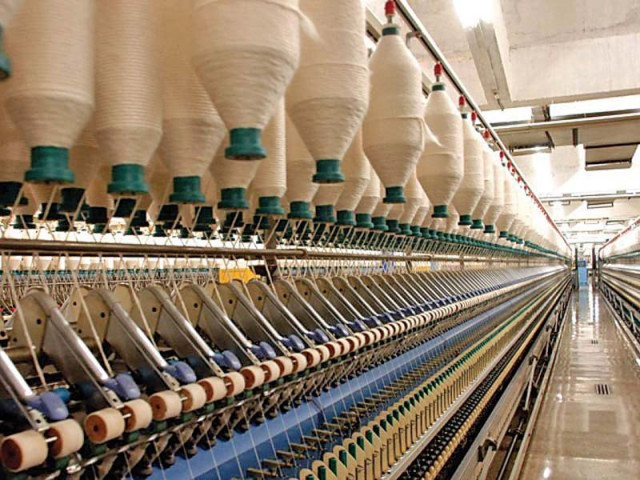Textile products: Govt to probe fall in exports despite offering incentives
Will analyse data to determine actual cotton yarn consumption

Weakening global commodity prices, shift in demand patterns in leading markets, exchange rate issues and slowdown in Chinese economic growth were cited as factors that primarily contributed to the decline in exports. PHOTO: FILE
The government has decided to launch a probe into the affairs of the textile millers as despite enjoying cheaper electricity and gas, the exports of the industry have gone down.
The investigation will focus on actual consumption of cotton yarn by the textile mills.
Venting out: Textile exporters foresee fresh fall in exports
Finance Secretary Waqar Masood Khan, in a meeting of the Economic Coordination Committee (ECC) on December 31, 2015, commented that decline in the export of cotton cloth was not justifiable and called for investigating the matter in order to determine the actual consumption of cotton yarn.

Finance Minister and ECC Chairman Ishaq Dar also suggested further analysis of the data to find out the actual reasons and factors responsible for the drop in exports.
He asked government officials to take up the matter with the textile industry and pressed the industrialists to step up exports, particularly in view of the recently announced package that offered cheaper electricity and gas.
The ECC was told that Pakistan’s overall exports during 2014-15 stood at $23.9 billion. Giving regional comparison, Commerce Secretary Muhammad Shehzad Arbab said the growth in exports of Pakistan, China and India remained negative except for Bangladesh. Of the total shipments, exports of cotton and cereals from Pakistan and India had also fallen.
Textile industry: Govt must address causes of falling exports, says Bilwani
Meeting participants highlighted the 2014 export data for Pakistan and the rest of the world in respect of textile, leather, engineering, metals, minerals and other manufacturing products.
A major chunk of Pakistan’s exports during the year comprised textile and garments constituting 54% of the total shipments, but their share in world exports was only 4%. There were a number of exogenous and endogenous factors behind the below-par performance, the ECC was told.
Weakening global commodity prices, shift in demand patterns in leading markets, exchange rate issues and slowdown in Chinese economic growth were cited as factors that primarily contributed to the decline in exports.
Supply-side issues such as energy shortage and its cost, outdated technology, lack of standardisation and compliance and market-related matters like market concentration, constraints in regional markets and non-tariff barriers in India and Iran were other major factors for the drop in exports from Pakistan.
Textile exports take a beating in September
Lack of trade facilitation like the burden of regulations, manual customs procedures and inadequate port infrastructure also played their role in weakening exports of Pakistan.
Besides textile products, exports of basmati rice, plastic materials, cement, machinery and jewellery also went down.
Meeting participants told the ECC that the export of petroleum product naphtha had shown a significant decrease because a number of refining plants had been established in Gulf countries to produce the oil product.
Published in The Express Tribune, January 12th, 2016.
Like Business on Facebook, follow @TribuneBiz on Twitter to stay informed and join in the conversation.



















COMMENTS
Comments are moderated and generally will be posted if they are on-topic and not abusive.
For more information, please see our Comments FAQ